Some mentions to BIPES project!
https://www.hackster.io/magicbit0/bipes-with-magicbit-block-based-integrated-platform-a3dbaa
https://www.youtube.com/watch?v=5Tu4BAkZTjE
Mobile Robot programmed using BIPES / Blocks.
Parts: 2 servos for movement; 1 servo for sensor positioning; 1 HCSR04 ultrasonic sensor; ESP8266 module.
To access the program, just use the link:
http://bipes.net.br/beta2/ui/#iz4268
EasybotDS kit used:
August has been an important month for BIPES and has brought many improvements to the platform.
We completely changed how the Files tab looks and works, now it’s easier and more reliable to work with your device internal files and uploading through serial is incredibly fast1. We also merged the Code with the Files tab, so the workflow is more concise.
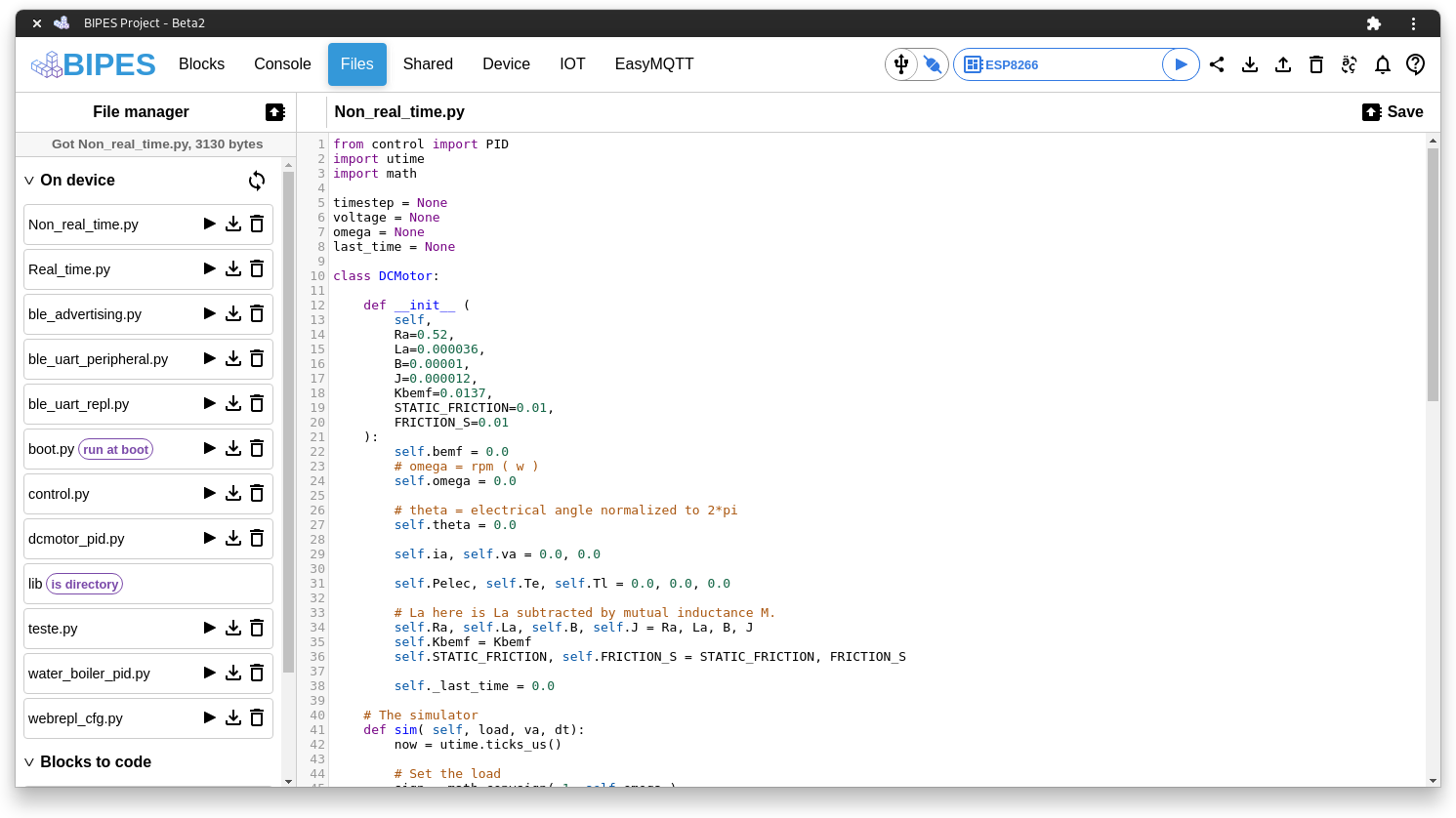
The BIPES XML file can now be edited and pushed directly, so you can see, test and hack how the platform loads the blocks and workspace info. We are planning to include more relevant data in the XML soon, like the freeboard JSON.
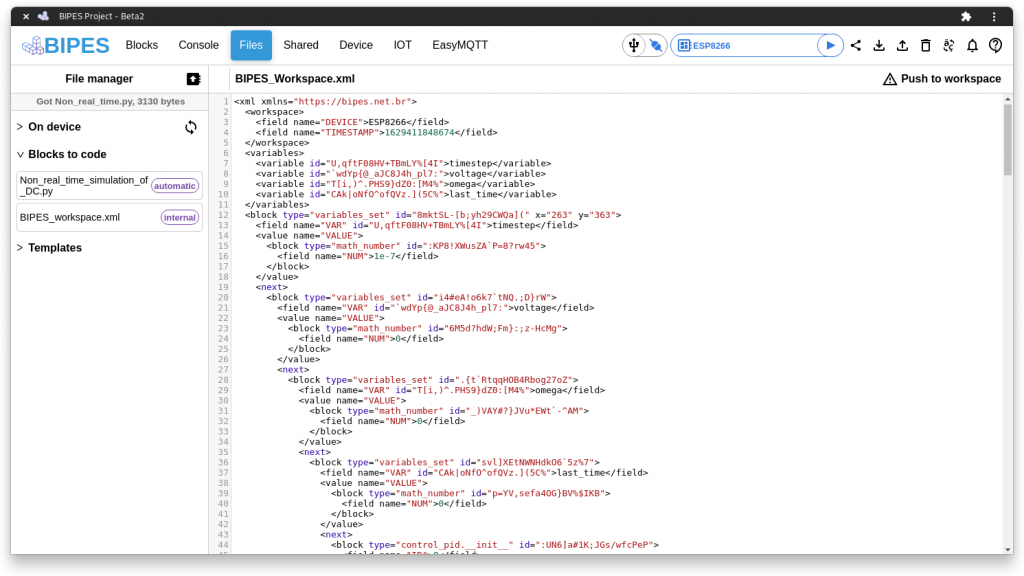
We upgraded the terminal library to xterm.js, the most common solution for webapps, used in many projects like CodeReady Workspaces, Katacoda and that code editor from that glassware company(humor).
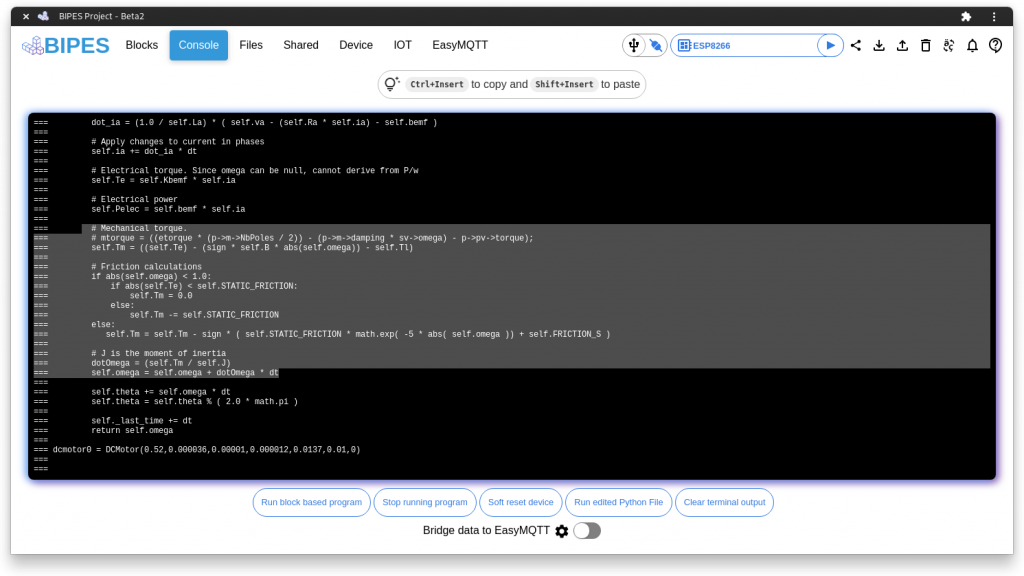
It works well on phones and tablets and you can now copy and paste full chunks of data into the terminal with Ctrl+Insert and Shift+Insert.
Create graphs with your IoT data directly into BIPES with the freeboard dashboard. Both MQTT and Serial (with BIPES Plot block) are supported data sources. You can also redirect your serial data to MQTT with the EasyMQTT Bridge feature, so you won’t loose it if closing the browser.2
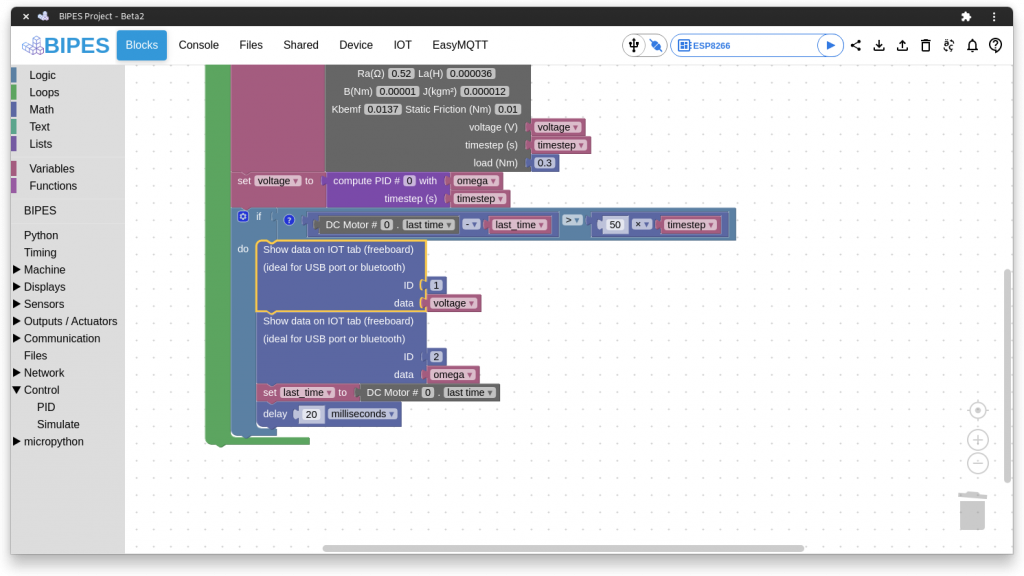
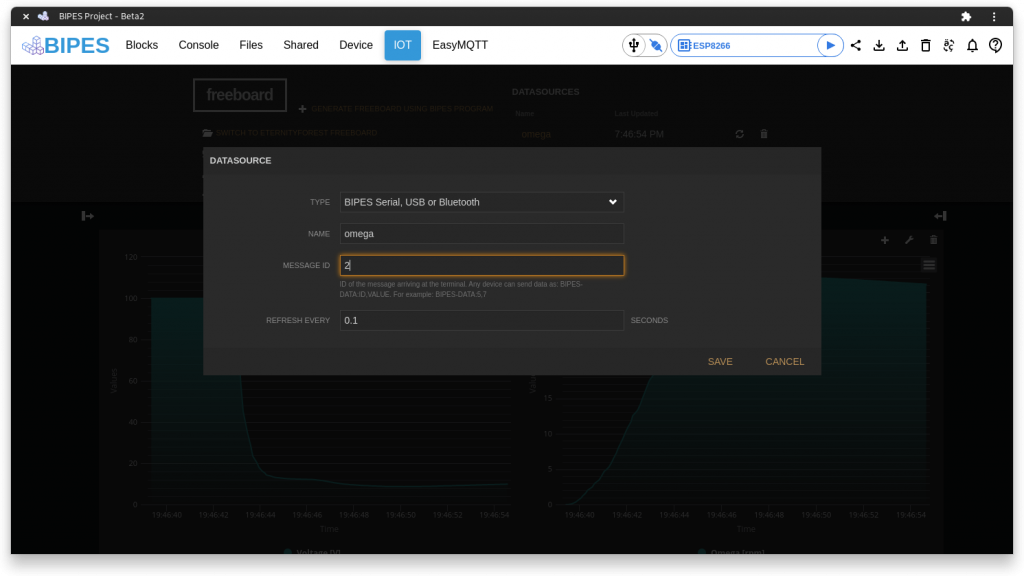
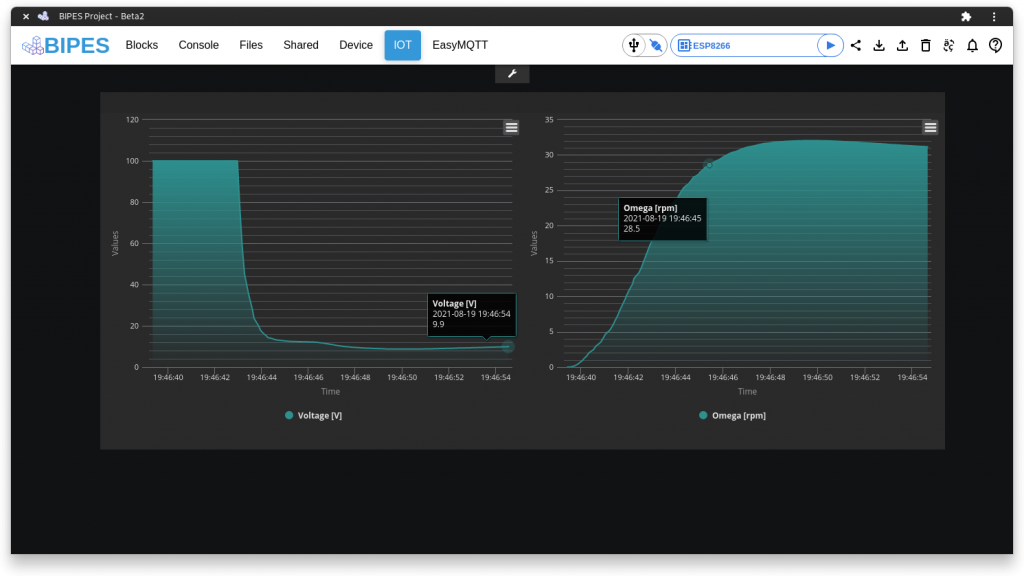
First of all, we combined all version (Serial, Bluetooth and TCP/IP) in one single code base, available now on our new repository at github.com/BIPES/BIPES.
This move will improve code quality, allow easier documentation and contributions by and for the community.
Also, we decided to use GitHub new Discussions feature as our forum, since the last self hosted one ended up with tons of spam (and we just won’t bother raging a war against the machines(humor)).
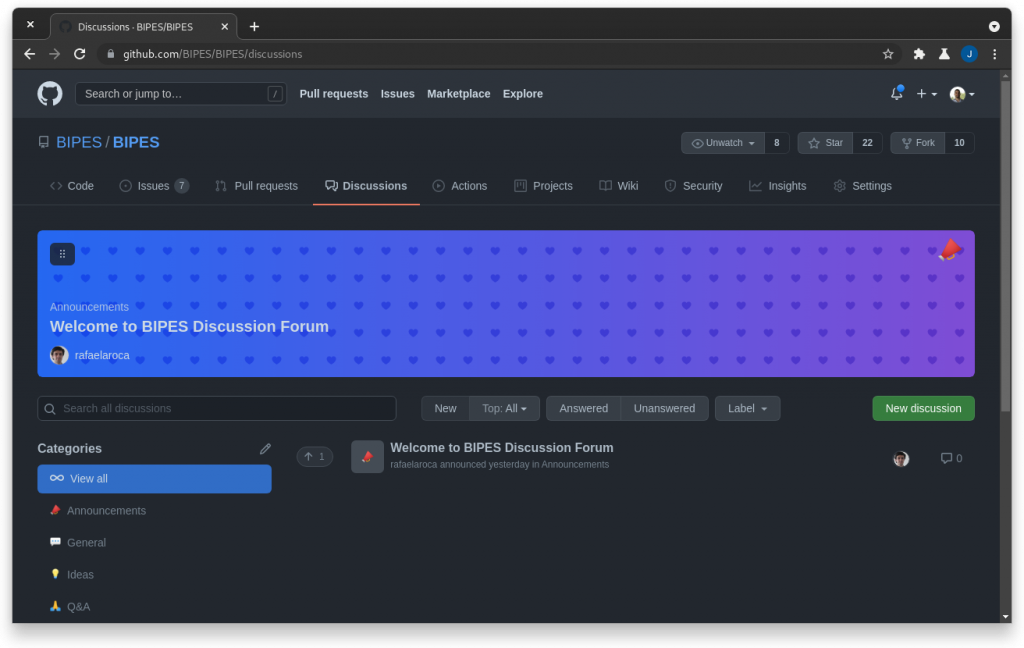
When working with blocks, now the code is smartly generated, allowing to feedback “compiled” data back to Blockly workspace. This means we will be able to create smarter blocks, like showing warnings and changing its color based on input3.
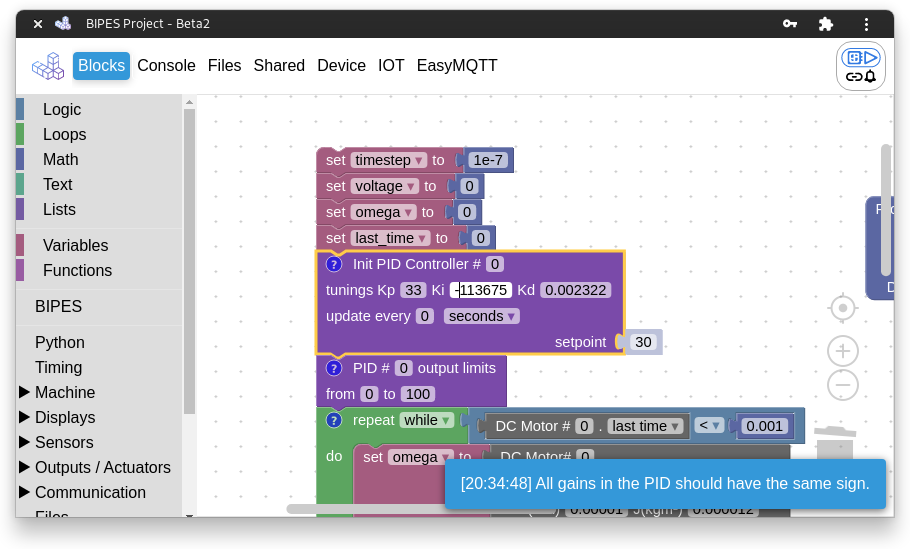
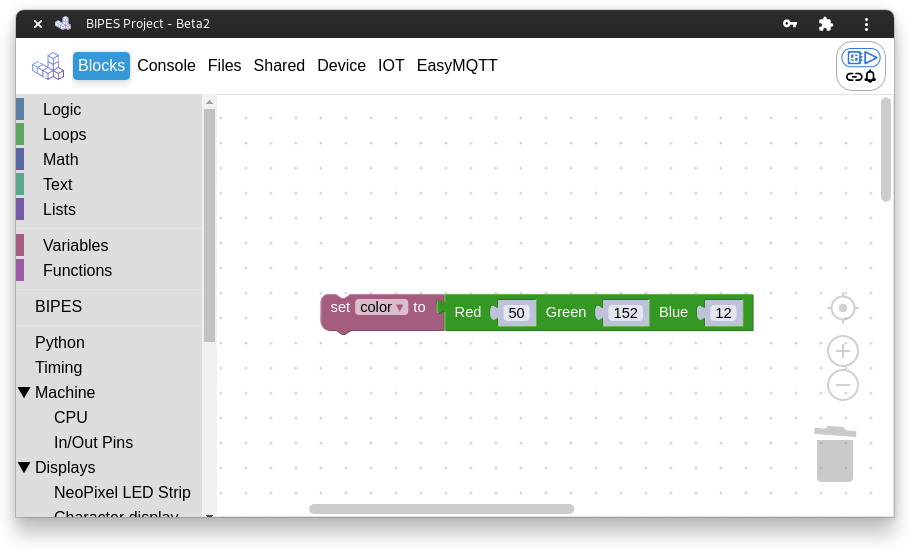
Generate a non server version with make offline, it works by concatenating all JSON and XML data into index_offline.html file, “bypassing” chromium local file restriction (think of it as a “flash drive” version).
I have been studying JSDoc syntax and how sphinx and sphinx-js plugin would work with BIPES structure. I will be doing some tests soon and made myself the goal to documenting a function per commit.
BIPES is reaching some maturity, but we still have a long road ahead, if something doesn’t work as expected consider opening an issue and discussing in the forum to help us make BIPES better.
Also, would like to thank the wonderful support by the community in this development cycle.
Footnotes:
MemoryError when pushing your device to the limit.We have just migrated the old repository:
https://github.com/rafaelaroca/bipes_ui_testing
With all BIPES sources to this new shining repo:
https://github.com/BIPES/BIPES
And took the opportunity to add a discussion forum based on github discussions!
Damien George, MicroPython creator explains at 1228 seconds of the video :
It is now possible to use BIPES with Arduino UNO, MEGA, NANO and Pro thanks to https://sneklang.org/. Thank you Keith for the great work on Snek.
If you want to try, just open the browser, go to:
https://bipes.net.br/snek-web-uploader/
Flash snek on your Arduino and use BIPES to program your Arduino using Snek blocks from BIPES.
Program ESP32 using Bluetooth and BIPES / Web Bluetooth REPL
Install the required libraries (ESP32 must be connected to the Internet):

You can install by connecting to the board using BIPES console tab, and clicking on each of the buttons above, which are available on the toolbox (Select ESP32 board on the top right, then go to Network -> Web Bluetooth REPL).
Then you need a single block:

Pair the device mpy-repl / ESP32:

Go to BIPES Serial:
https://bipes.net.br/beta2serial/ui/
On the Console, click on connect (Web Bluetooth):

And the REPL is available using Bluetooth:

Now you can interact with the board using Bluetooth, send block-based programs, manage files, etc.
Here is one example that reads the ADC of the ESP32. Using BIPES-DATA block, you can view the data on the dashboard!

Console:
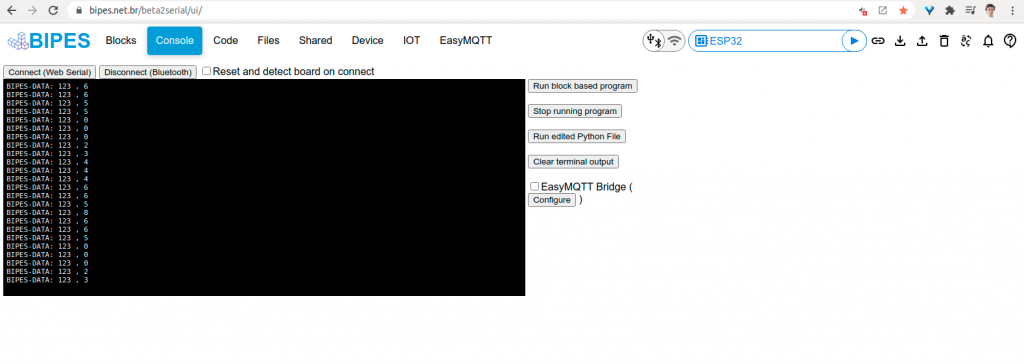
IOT tab:
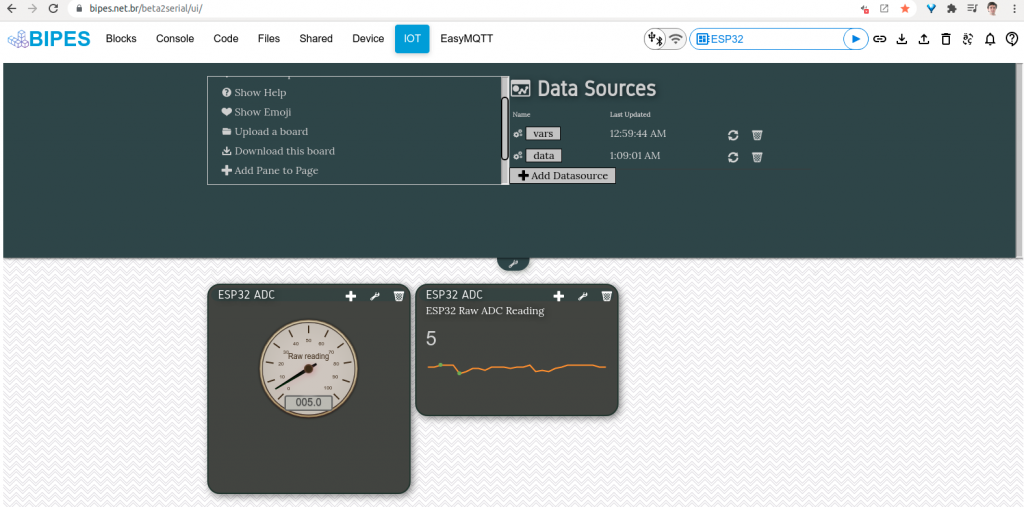
Program sent to the board using Bluetooth, REPL access and dashboard data view from Bluetooth data!
BIPES offers an EasyMQTT data source for freeboard dashboards. Moreover we embedded freeboard on the BIPES IoT tab. Programs can send data to the EasyMQTT server, which is stored and can be seen on the dashboard.
Here is an example program:

When the program starts, the console tab show its operation:

Next, by clicking on EasyMQTT tab, it is possible to see how data are changing:
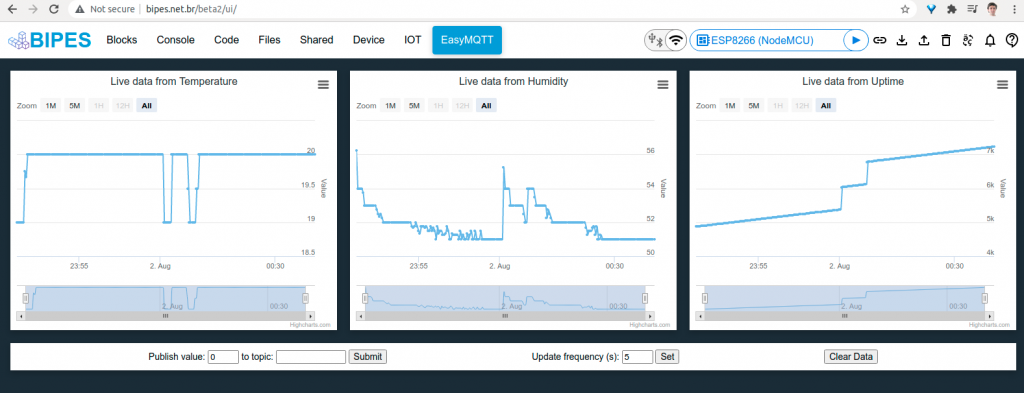
Now, we can go to the IoT tab and one data source for each EasyMQTT topic for this session:

Next, add panes and widgets to panes, as this example:

Here is one possible setup:
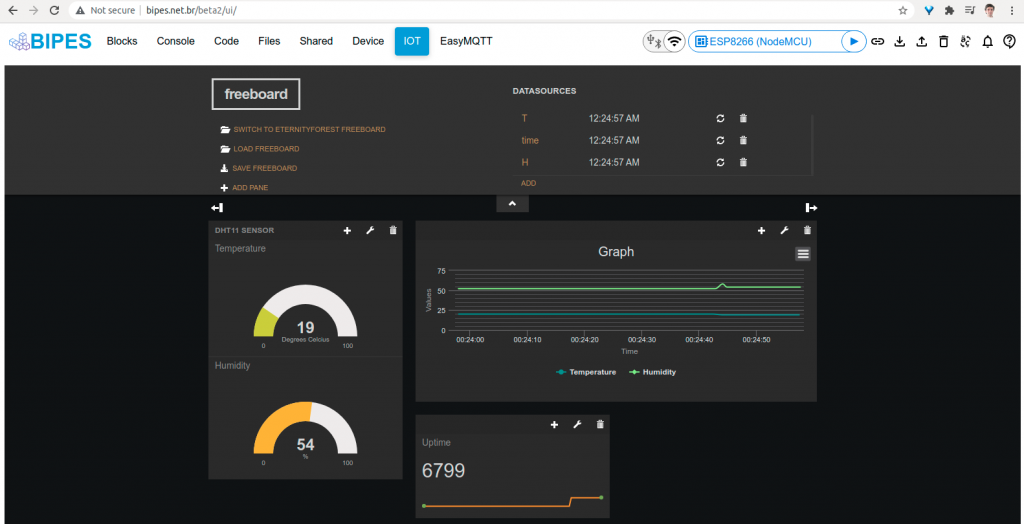
This is a quick demo of Block-Based Integrated Platform for Embedded Systems (BIPES) and an ESP32 board running MicroPython to play RTTTL songs!
You can use it at:
https://bipes.net.br/beta2serial/ui/
The circuit is quite simple: a generic ESP32 board and a buzzer connected to GND and pin D23. No software installation required.
Just get a board, load MicroPython once and use BIPES to program and interact with the board using a web browser.
Thanks @PicoKit for the feature suggestion: